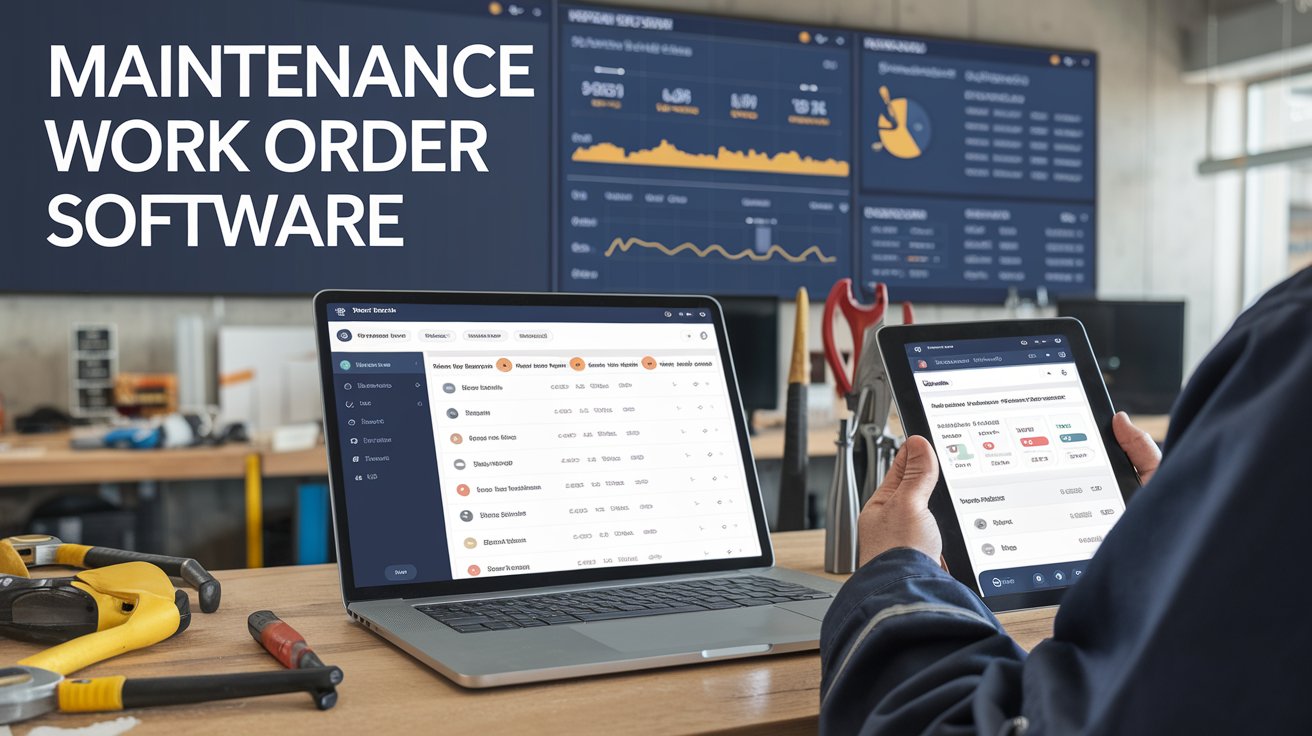Maintaining the operational effectiveness of facilities is more crucial than ever in the fast-paced commercial world of today. It is crucial to make sure that all maintenance jobs are completed quickly and effectively, regardless of whether you are in charge of an industrial complex, commercial structure, or any other type of institution. Software for maintenance work orders is useful in this situation. It streamlines workflow and reduces downtime by making it easier to assign, track, and finish maintenance jobs. The following are essential considerations to comprehend the importance and advantages of implementing maintenance work order software.

What is Maintenance Work Order Software?
The entire maintenance process can be automated and streamlined with the use of maintenance work order software. Without the use of spreadsheets or paper-based systems, it assists facilities managers in creating, monitoring, and managing work orders—requests for maintenance or repair jobs. Businesses can enhance their asset, labor, and inventory management by utilizing this software, which provides real-time insights into their maintenance activities.
Key Features of Maintenance Work Order Software
- Work Order Creation and Assignment
One of the primary features of maintenance work order software is the ability to create work orders electronically. Maintenance requests can be logged quickly and assigned to the appropriate technicians. The software often allows customization of the forms, so the work order can include critical details like priority, description, location, and required tools or parts. - Real-time Updates and Notifications
The software allows for real-time updates on the status of work orders. Facility managers and technicians receive notifications when tasks are completed, delayed, or require additional attention. This feature helps avoid miscommunication and ensures that everyone stays on track with the tasks. - Asset Management
Maintenance work order software is often integrated with asset management tools, allowing facility managers to track the health, performance, and condition of critical equipment. By keeping track of asset histories, the software helps prevent unnecessary downtime and reduces the risk of equipment failure. - Scheduling and Preventive Maintenance
With built-in scheduling features, the software can help ensure that regular maintenance tasks are performed before equipment fails. Preventive maintenance scheduling reduces emergency repairs, extends the lifespan of assets, and minimizes the overall costs of maintenance. - Cost Tracking and Budgeting
Maintenance work order software can track expenses associated with each task, including labor, parts, and overheads. This allows businesses to keep an eye on their maintenance budgets, helping to prevent overspending and enabling better financial planning for future tasks. - Reporting and Analytics
The software offers advanced reporting and analytics capabilities, allowing managers to generate reports on work order completion, costs, technician performance, and asset conditions. This data-driven approach enables managers to identify trends, make informed decisions, and optimize operations.
Access Free Demo! https://axonator.com/request-for-demo/
Benefits of Maintenance Work Order Software
- Improved Efficiency and Productivity
Automating work order management with maintenance software reduces the time spent on administrative tasks like filling out paper forms, organizing files, and checking email for updates. Technicians can access work orders on their mobile devices, making it easier to track and manage tasks in the field. This results in faster response times and more efficient use of resources. - Reduced Downtime and Operational Disruptions
Unplanned maintenance or equipment breakdowns can cause significant disruptions to operations. With preventive maintenance schedules, managers can ensure that equipment is serviced before failure, thus reducing the risk of downtime. Moreover, technicians are better equipped to complete repairs quickly with access to complete maintenance histories. - Increased Accountability and Transparency
Maintenance work order software tracks every action taken in response to a work order. It logs time spent on tasks, materials used, and work completed, ensuring that all activities are transparent. This level of accountability improves productivity and helps avoid unnecessary delays or mistakes. - Cost Savings
By streamlining work orders, tracking expenses, and preventing unplanned breakdowns, maintenance work order software can result in significant cost savings. Over time, businesses may notice lower repair and labor costs, improved asset performance, and better budget management. - Enhanced Compliance and Documentation
For businesses in industries with strict regulatory requirements, maintenance work order software ensures that compliance standards are met by keeping accurate records of all maintenance tasks performed. The software can generate reports required for audits, inspections, or legal purposes, making it easier to stay compliant.
Choosing the Right Maintenance Work Order Software
When selecting maintenance work order software, consider the following factors:
- Ease of Use: The software should be user-friendly for both technicians and managers.
- Customization: Look for software that can be tailored to meet the specific needs of your facility.
- Mobile Access: Ensure that technicians can access work orders and update progress from the field.
- Integration: The software should integrate with other business systems, such as asset management or inventory software.
- Support and Training: Choose software that offers good customer support and provides training materials for smooth adoption.
Maintenance work order software is a powerful tool for managing facility operations and improving the overall efficiency of maintenance processes. It enhances communication, helps reduce downtime, and ensures that assets are properly maintained, ultimately leading to cost savings and a more productive work environment. For any facility manager looking to optimize their maintenance operations, investing in work order software is a smart move.
